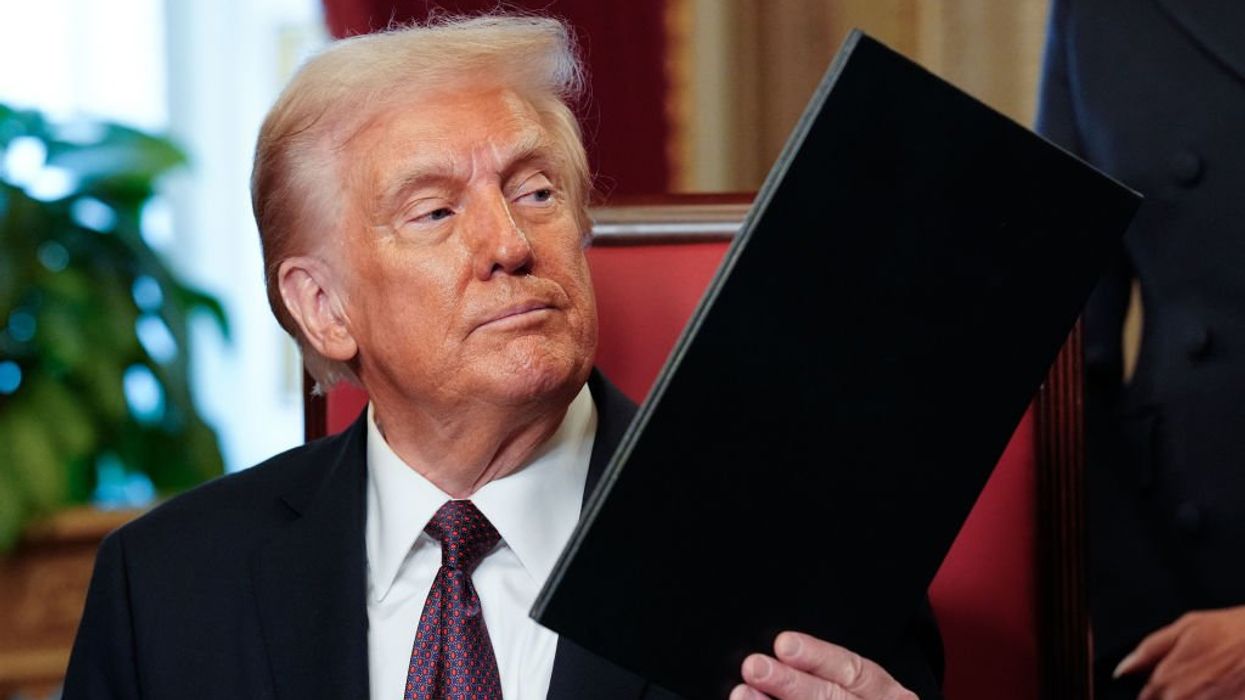Last spring and summer, The Fulcrum published a 30-part series on Project 2025.
For those of you not familiar with Project 2025, it is a playbook written in late 2024, specifically created for Donald Trump to use as a guideline for his first 180 days in office should he win the November election. The Heritage Foundation, a conservative think tank, proudly took credit for facilitating the creation of the 887-page documentary.
Project 2025’s two editors were assisted by 34 authors, 277 contributors, a 54-member advisory board, and a coalition of over 100 conservative organizations (including ALEC, The Heartland Institute, Liberty University, Middle East Forum, Moms for Liberty, the NRA, Pro-Life America and the Tea Party Patriots).
At the time, those from the left and the right were making assumptions about the meaning and impact of Project 2025. The Fulcrum felt a different approach was needed and proceeded to publish 30 columns over a three-month period, analyzing Project 2025 from a cross-partisan perspective, void of pre-determined left or right solutions. We felt this would serve as a guide for citizens and our elected representatives to ensure the healthy democratic republic we all desire.
Now that Trump has been Elected- Project 2025- Part II
Now that Donald Trump has been elected president, it is time for “Project 2025 Part II” to determine if last year's speculation as to what might be implemented from Project 2025 is actually being implemented or in the process of being implemented.
During his 2024 presidential campaign, then-candidate Trump distanced himself from the initiative, calling parts of it "ridiculous and abysmal". However, recently, he praised some aspects of the policy agenda, describing parts of it as "very conservative and very good".
Actions speak louder than words and despite his previous disavowals, many of Trump's early actions in his second term align with the Project 2025 agenda, including sweeping deregulation measures and aggressive immigration reform.
Already, the Trump administration has taken several actions that align with Project 2025. Here are a few notable examples:
- Deregulation Measures: Trump has issued executive orders rolling back numerous regulations, which is a key component of Project 2025's agenda.
- Immigration Reform: The administration has implemented stricter immigration policies, including measures to curb illegal immigration and enhance border security.
- Federal Emergency Management Agency (FEMA): Trump established a review council to advise on FEMA's ability to address disasters, echoing Project 2025's recommendation to shift more disaster response responsibilities to states.
- Gender Policies: An executive order was signed, recognizing only two sexes, male and female, which aligns with Project 2025's stance on gender issues.
These actions reflect the influence of Project 2025's policy blueprint on Trump's administration, and starting soon, the Fulcrum will again publish detailed reports on each of the federal departments being impacted by Project 2025.
If we are to have a healthy and thriving democratic republic, we need a “Cross-Partisan Project 2025,” and as we did last summer, we will ask many important questions on the various components being implemented:
- What's dividing Americans on critical issues?
- Which information presented by Project 2025 is factual and to be trusted, and what is not?
- What is oversimplified about Project 2025’s representation and perspective, and what is not? What are alternative solutions?
- What do people from all sides of the political spectrum need to understand to address salient points of Project 2025 in a critical-thinking manner?
- What are the questions nobody's asking?
We will, once again, explore the nuances and complexities of the subjects and issues covered in the implementation of components of the Project 2025 plan.
We will not shy away from Project 2025’s most controversial components and will call attention to dangerous thinking that threatens our democracy when we see it. However, in doing so, we are committing to not employing accusations, innuendos or misinformation. We will advocate for intellectual honesty to inform and persuade effectively.
The second phase of our Cross-Partisan Project 2025 series offers The Fulcrum a unique opportunity to provide reporting that banishes the old ways of demonizing “the other side.” We will be committed to implementing critical thinking, reexamining outdated assumptions, and using reason, scientific evidence, and data in formulating and testing public policy for 2025 and beyond. Our reporting and analysis will be based on a philosophy that seeks out diverse perspectives and experiences to find common ground.
Our nation needs to reshape our collective sense of civic responsibility, community building and political engagement. We must nurture new generations of thoughtful citizens and committed leaders who will promote a multidimensional approach to America's most important domestic and foreign policy issues.
That is the goal of Part II of “The Fulcrum’s Cross-Partisan Project 2025”
Samples of Phase 1 articles about Project 2025
- A cross-partisan approach
- An Introduction
- Rumors of Project 2025’s Demise are Greatly Exaggerated
- Department of Education
- Managing the bureaucracy
- Department of Defense
- Department of Energy
- The Environmental Protection Agency
- Education Savings Accounts
- Department of Veterans Affairs
- The Department of Homeland Security
- U.S. Agency for International Development
- Affirmative action
- A federal Parents' Bill of Rights
- Department of Labor
- Intelligence community
- Department of State
- Department of the Interior
- Federal Communications Commission
- A perspective from Europe
- Department of Health and Human Services
- Voting Rights Act
- Another look at the Federal Communications Commission
- A Christo-fascist manifesto designing a theocracy
- Voters oppose the far-right playbook
- The Schedule F threat to democracy
- The Department of Justice
- A blueprint for Christian nationalist regime change
- How anti-trans proposals could impact all families
- The Federal Reserve
- A threat to equitable education




















